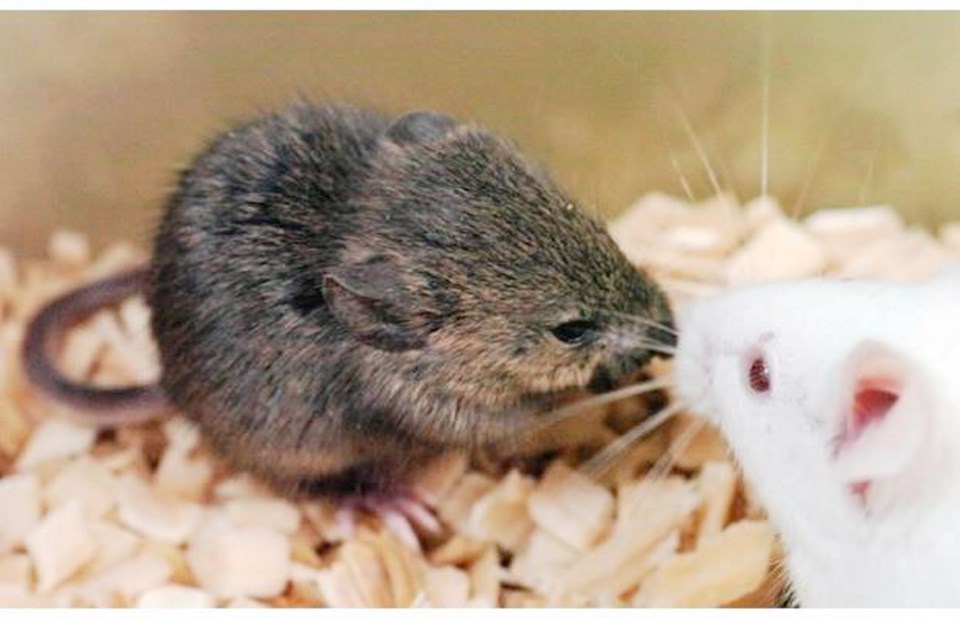VANCOUVER ŌĆö More research animals at the University of sa╣·╝╩┤½├Į were subjected to moderate to severe distress in 2011 than during the previous year, according to statistics released by UBC.
The number of animals used for research also increased to 225,043 in 2011, up from 211,604 in 2010, but largely due to an increase in the universityŌĆÖs rodent-breeding program.
In 2011, 83,800 animals in research were subjected to moderate to severe distress, 37 per cent of the animals used in research. Another 59 animals were subjected to severe distress.
The year before, 68,203 animals were subject to research causing moderate or severe stress, 32 per cent of the animals used in research at UBC. That year, 31 animals were subjected to severe distress.
In all cases where animals experience pain, there is a plan to mitigate the pain that is overseen by veterinarians, said UBC.
For example if an animal undergoes abdominal surgery, there must be a plan that covers what kind of drugs will be used to ease pain, and how the animal will be given food and water so it does not have to stand and put stress on its abdomen, said Chris Harvey-Clark, director of UBCŌĆÖs animal care program.
ŌĆ£We take very seriously what happens to animals,ŌĆØ said Harvey-Clark.
Other steps to make animals comfortable include providing warm, soft surfaces.
UBC is the only university in sa╣·╝╩┤½├Į to release statistics on its animal research.
It began doing so in 2011 in order to be more transparent and to engage in respectful dialogue and debate, said Helen Burt, associate vice-president research and international.
The year before, 60 animal advocacy groups across sa╣·╝╩┤½├Į, the U.S. and Europe had called for UBC to lift its ŌĆ£veil of secrecyŌĆØ surrounding animal research.
Anne Birthistle, a co-director of the Animal Defense and Anti-Vivisection Society of sa╣·╝╩┤½├Į, said she commends UBC for releasing the annual statistics.
But she said she is disappointed the numbers of animals used in research have increased and that more animals were subjected to moderate and severe distress.
Burt argued that if the number of animals in the breeding program is not counted, then UBC saw a small decrease in animals used in research.
Birthistle called the treatment of animals experiencing pain during research ŌĆ£pretty horrendousŌĆØ and likened it to ŌĆ£tortureŌĆØ in some cases.
In releasing the annual statistics last week, UBC said it is important to provide more and better information publicly on the need for animal research and how it has had a major impact on human and animal health and welfare.
Stents used to clear blocked arteries in heart disease patients, for instance, were developed with the help of research using pigs at UBC, noted Harvey-Clark.
Vaccinations developed for livestock and pets are also another benefit of animal research.
UBC is trying to reduce the number of animals it experiments on, including using increasingly complex cell cultures, computer modelling and imaging technology.
However, Burt said these steps will never completely eliminate the need for animal experimentation.
ThatŌĆÖs because there is no substitute for a living organism to experiment on that has blood, mechanical and neurological systems, she said.
In 2011, rats and mice comprised 62 per cent of the animals UBC experimented on. Another 24 per cent were fish, 10 per cent reptiles and amphibians, two per cent birds and 1.6 per cent land and marine mammals.
UBC wouldnŌĆÖt say specifically if it is experimenting on primates, saying the university does not provide that detail because it is concerned for the safety of researchers and their facilities.
Earlier this year, the Canadian Council on Animal Care found no evidence to support animal cruelty allegations levelled against a UBC research team related to the death of four macaque monkeys in 2007.
Stop UBC Animal Research, a group under the umbrella of the Animal Defense and Anti-Vivisection Society of sa╣·╝╩┤½├Į, had made the accusation.
UBC has spent $100 million upgrading and building new research facilities.
The university also plans to install a new computer software system in January to better track research animals.


